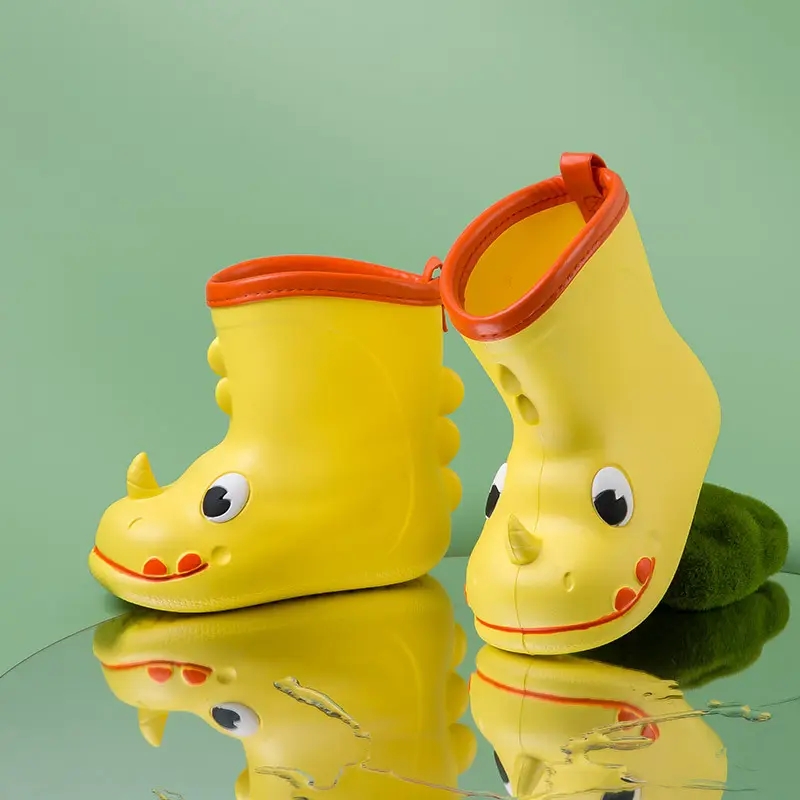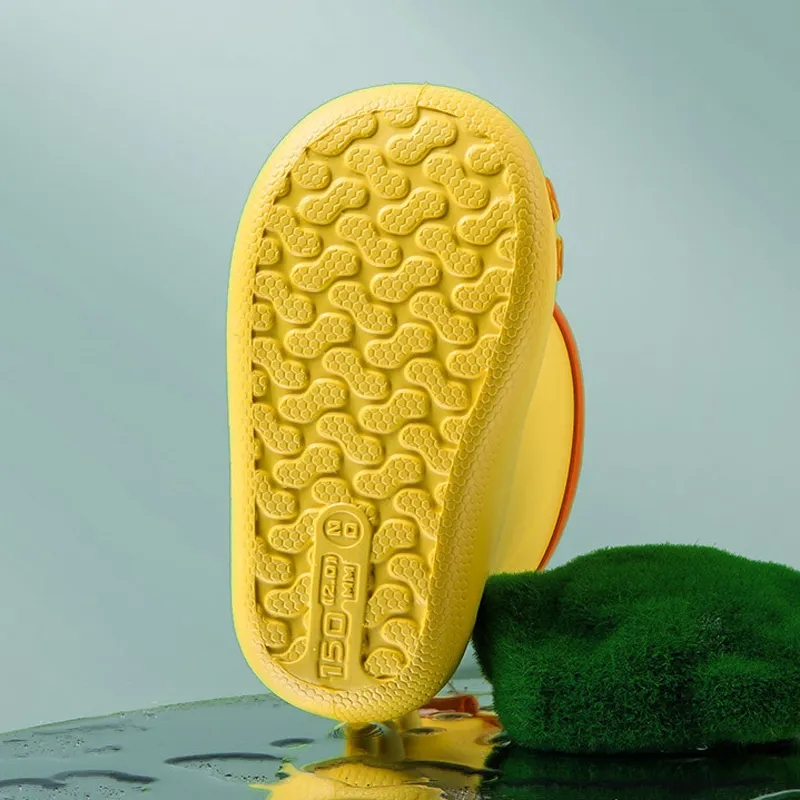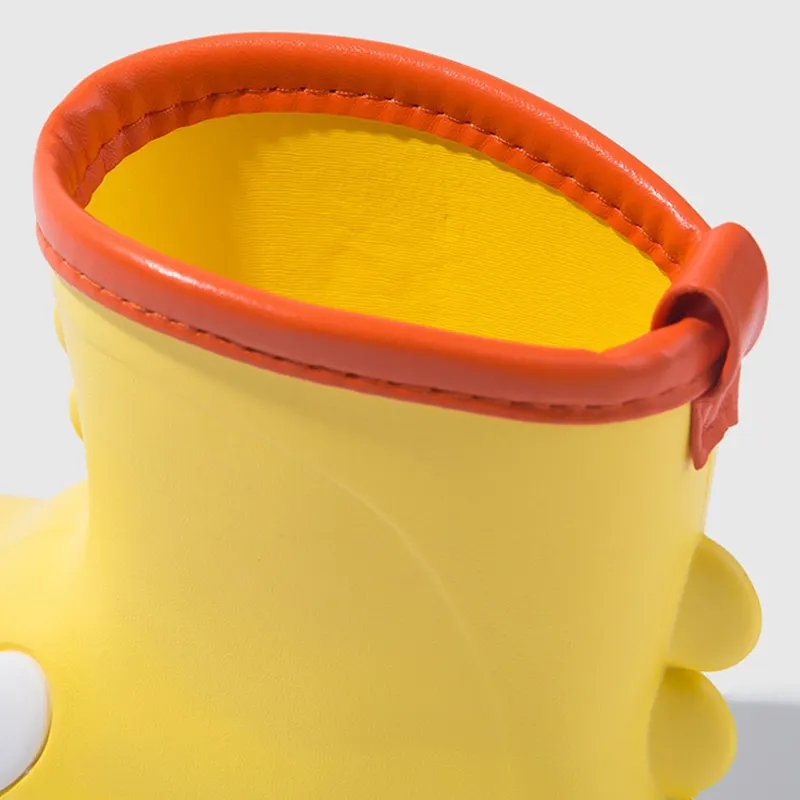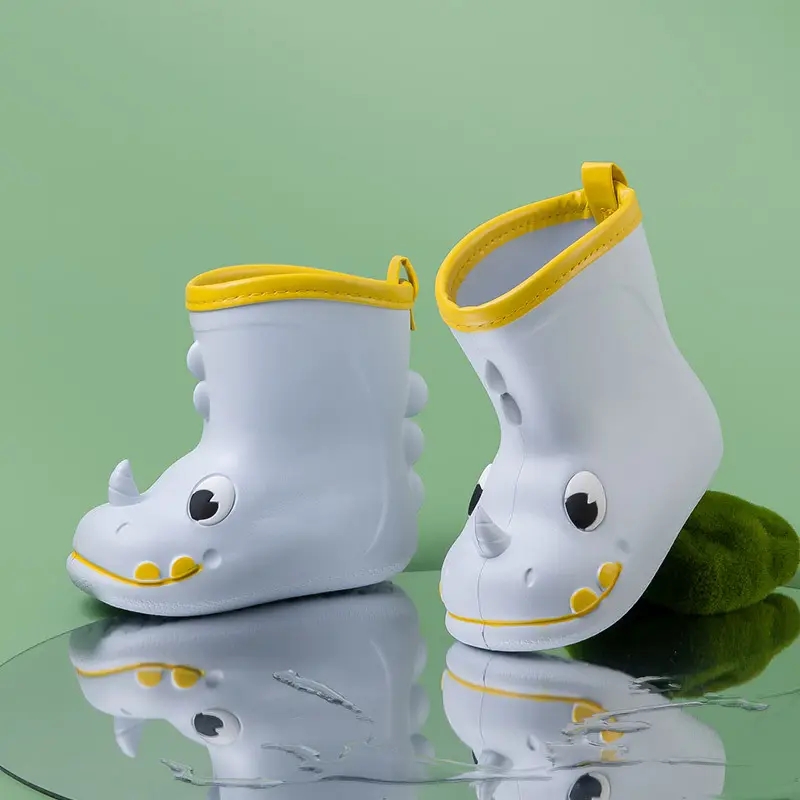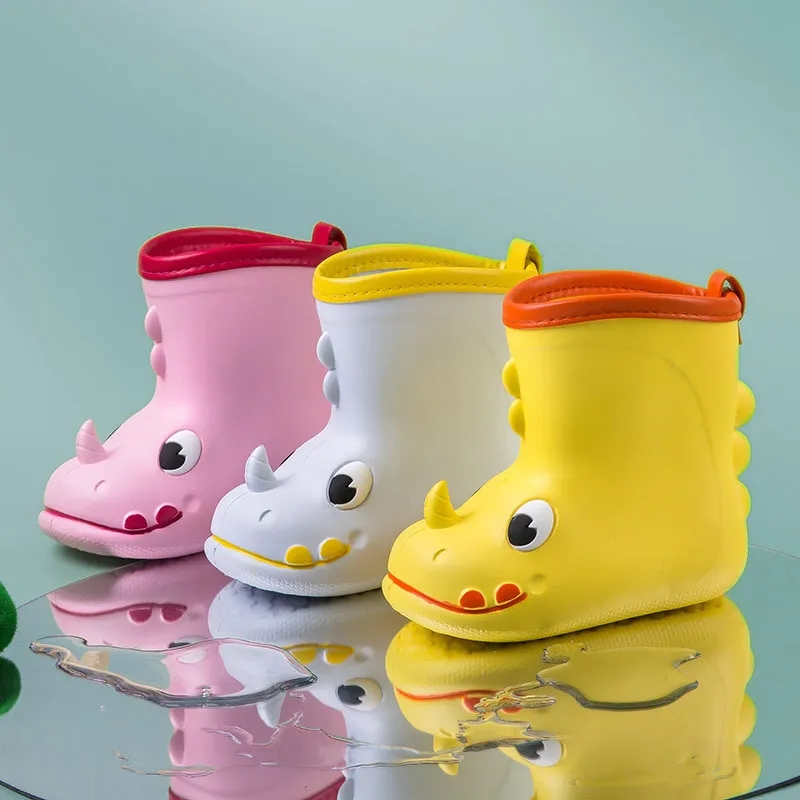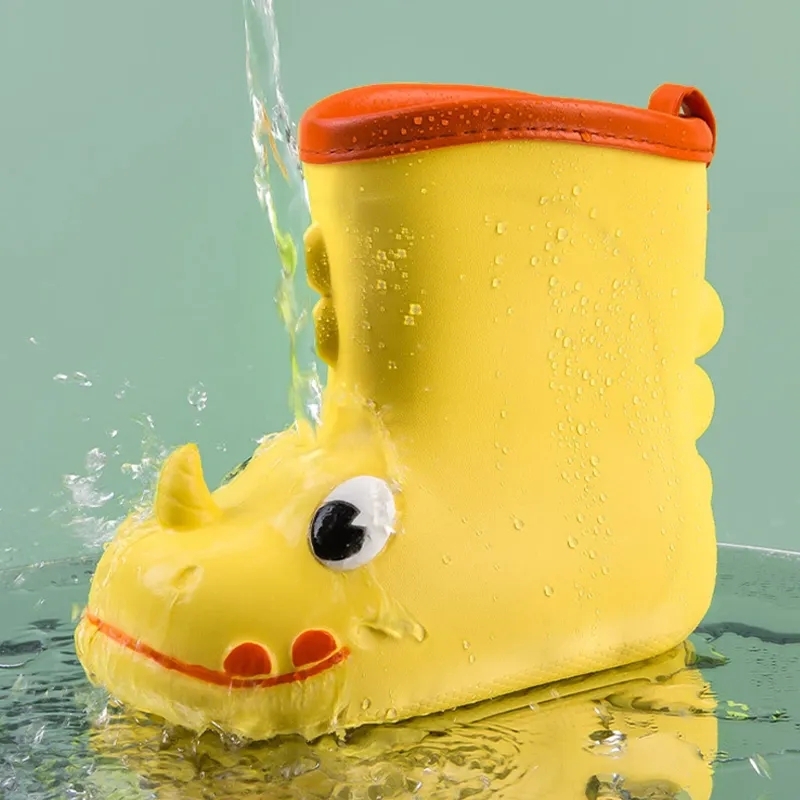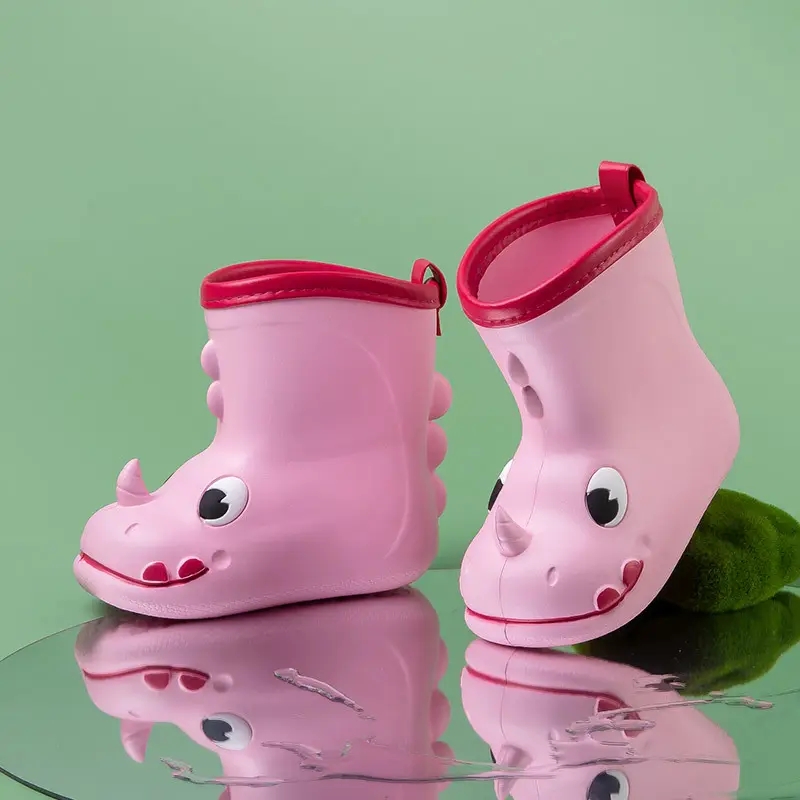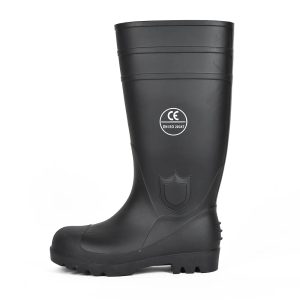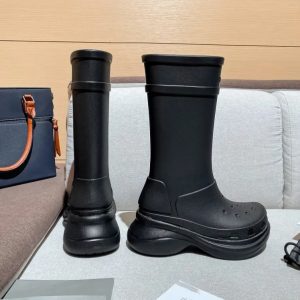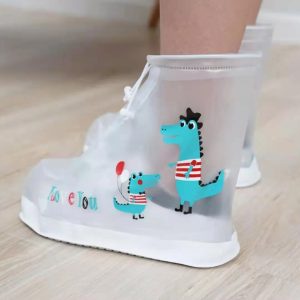Rain boots, also known as Wellington boots or rubber boots, offer several benefits in wet and rainy conditions. Here are some advantages of wearing rain boots:
- Waterproof: Rain boots are specifically designed to be waterproof, which means they keep your feet dry even in heavy rain or while walking through puddles. The rubber material used in their construction provides an effective barrier against water.
- Protection from moisture: In addition to keeping your feet dry, rain boots also protect your feet and lower legs from moisture. This is particularly useful when walking through wet grass, muddy areas, or even shallow streams. They prevent water from seeping in and keep your feet clean and comfortable.
- Slip resistance: Rain boots often have a textured sole that offers good traction on wet and slippery surfaces. This helps prevent accidental slips and falls, providing better stability and grip in rainy conditions. The rubber material of the boots also tends to have some natural grip, further enhancing slip resistance.
- Easy to clean: Rain boots are relatively easy to clean. You can simply rinse off mud or dirt with water, wipe them down, and let them air dry. This makes them a practical choice for outdoor activities in muddy or wet environments.
- Versatility: Rain boots are not limited to rainy weather alone. They can also be worn in various outdoor activities such as gardening, farming, hiking, fishing, or even during festivals and events. They offer protection from more than just rain, making them versatile footwear for different situations.
- Durability: High-quality rain boots are designed to be durable and long-lasting. The rubber material used in their construction is resistant to wear and tear, making them suitable for regular use in challenging weather conditions.
- Style and fashion: Rain boots have become a fashionable accessory in recent years. They come in a wide range of colors, patterns, and styles, allowing you to express your personal style even on rainy days. From classic solid colors to fun prints, there are options to suit various preferences.
Overall, rain boots provide practicality, protection, and comfort in wet conditions, making them a valuable addition to your footwear collection.
Rain boots are typically packaged using a combination of protective materials and methods to ensure they remain in good condition during transportation and storage. Here are some common packaging methods for rain boots:
- Shoebox packaging: Many rain boots are packaged in shoeboxes, similar to other types of footwear. The boots are placed inside the box, usually wrapped in tissue paper or plastic bags to prevent scratching or scuffing. The box is then sealed with adhesive tape or secured with tabs.
- Individual polybags: To provide additional protection, rain boots are often individually wrapped in polybags. These plastic bags help keep the boots clean and shield them from moisture, dust, and other elements. The bags are sealed with heat or adhesive closures.
- Inner stuffing or padding: To maintain the shape and integrity of the boots during transit, some packaging may include inner stuffing or padding materials. This can be in the form of paper, foam inserts, or air-filled plastic cushions placed inside the boots to prevent them from collapsing or getting deformed.
- Outer cartons or shipping boxes: Once the boots are individually packaged, they are often placed inside larger cartons or shipping boxes for bulk shipping and distribution. These boxes provide an extra layer of protection and make it easier to handle and transport multiple pairs of rain boots together.
- Labels and branding: Packaging for rain boots typically includes labels or stickers indicating the brand, size, color, and other relevant information. These labels help with identification and inventory management. Additionally, brand-specific packaging designs and branding elements may be incorporated to enhance the overall presentation and appeal of the product.
It’s important to note that packaging methods can vary among different manufacturers and brands. Some may use additional materials, such as cardboard inserts or foam padding, while others may have more minimalistic packaging approaches. The ultimate goal is to protect the boots from damage and ensure they reach the customer in excellent condition.
Rain boots offer several advantages that make them a practical choice in wet and rainy conditions. Here are some key advantages of wearing rain boots:
- Waterproof: Rain boots are designed to be completely waterproof, thanks to their rubber or other water-resistant materials. This feature ensures that your feet remain dry even in heavy rain or while walking through puddles. Keeping your feet dry is not only more comfortable but also helps prevent issues like blisters, fungal infections, and cold feet.
- Protection from moisture: In addition to being waterproof, rain boots provide an extra layer of protection from moisture. Whether you’re walking through wet grass, muddy terrain, or shallow streams, rain boots shield your feet and lower legs from getting wet and dirty. They act as a barrier against moisture, keeping you clean and comfortable.
- Slip resistance: Rain boots often feature a textured sole that provides excellent grip on wet and slippery surfaces. This slip-resistant feature helps prevent accidental falls and provides better stability while walking on wet pavements, muddy trails, or other slippery terrains. The rubber material of rain boots also tends to have natural traction, enhancing grip further.
- Easy to clean: Rain boots are relatively easy to clean, making them convenient for outdoor use. You can simply rinse off mud, dirt, or other debris with water, wipe them down with a cloth, and let them air dry. Their rubber or synthetic construction makes them resistant to stains and easy to maintain, saving you time and effort.
- Versatility: While rain boots are primarily designed for wet weather, they are versatile enough to be used in various outdoor activities. Whether you’re gardening, camping, hiking, fishing, or attending festivals, rain boots offer protection from not just rain but also mud, puddles, and rough terrains. They are suitable for a range of outdoor adventures and can be a go-to footwear choice.
- Durability: Rain boots are typically made from durable materials such as rubber, PVC, or neoprene. These materials are resistant to wear and tear, making rain boots long-lasting and able to withstand harsh weather conditions. They are designed to be sturdy, flexible, and reliable, ensuring they serve you well for an extended period.
- Style options: Rain boots have evolved beyond their utilitarian purpose and are available in a wide range of styles, colors, and patterns. From classic solid colors to vibrant prints, you can find rain boots that match your personal style and preferences. This allows you to express your fashion sense even on rainy days.
By combining practicality, protection, and style, rain boots offer several advantages that make them a valuable addition to your footwear collection, especially in wet and rainy conditions.





